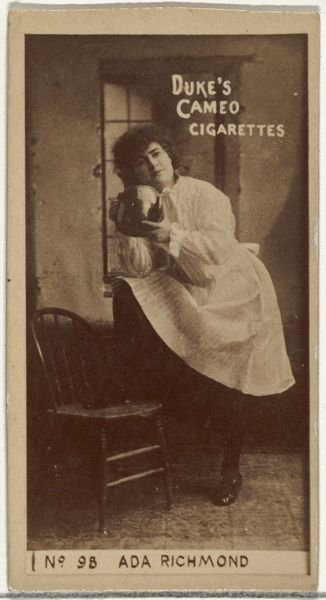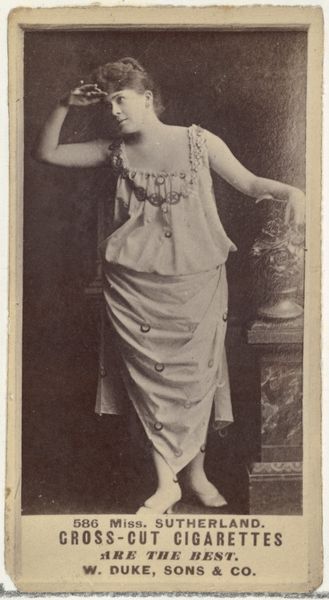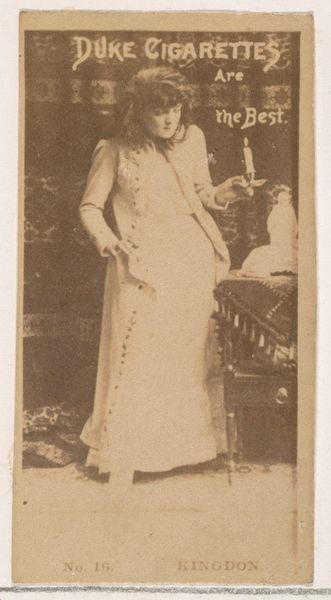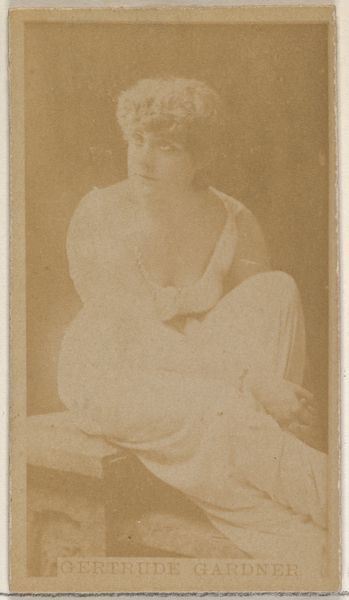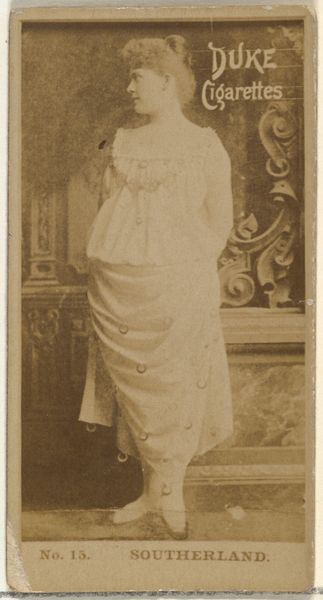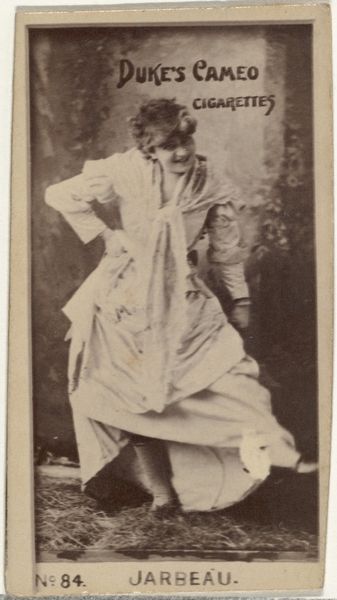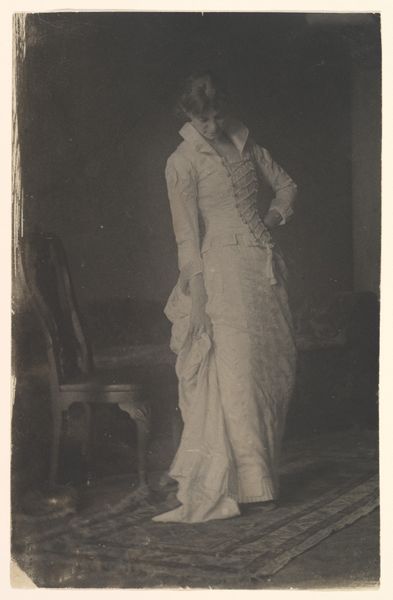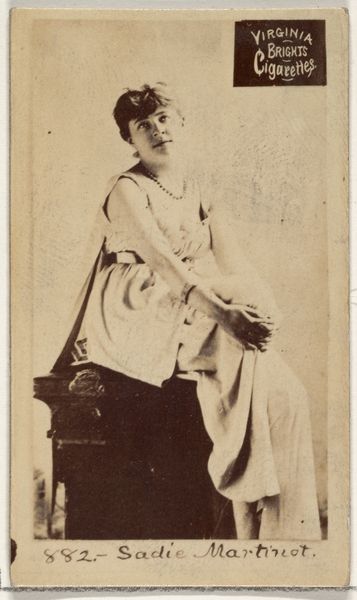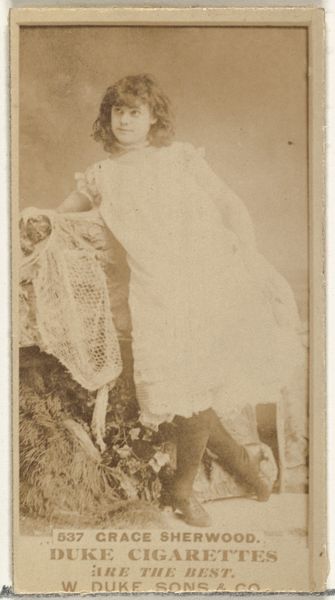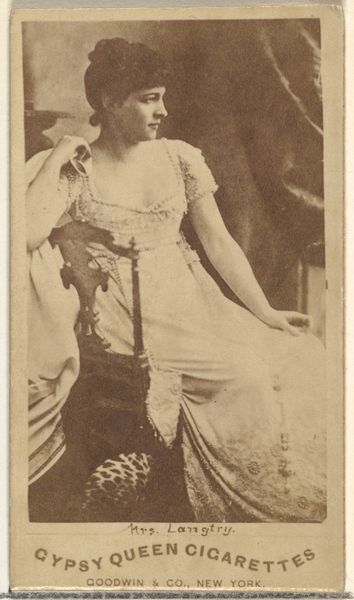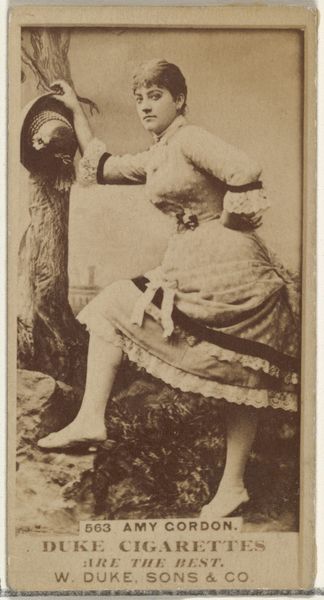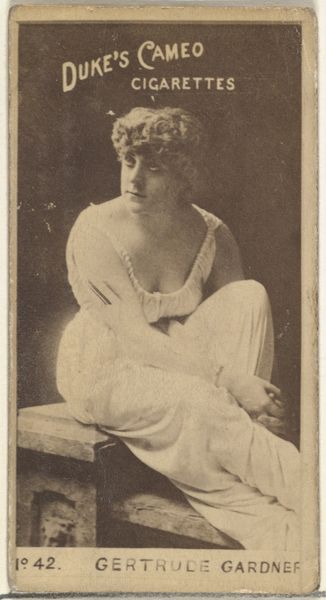
photogravure, photography, gelatin-silver-print
#
portrait
#
photogravure
#
wedding photograph
#
pictorialism
#
figuration
#
photography
#
historical fashion
#
gelatin-silver-print
#
united-states
#
symbolism
Dimensions: 4 3/4 x 6 5/16 in. (12.07 x 16.03 cm) (image)
Copyright: No Copyright - United States
Editor: This is "Portrait—Miss De C.," a photogravure print made in the late 19th or early 20th century by Joseph T. Keiley. I’m immediately drawn to the dreamy, almost melancholy mood of the image. It's like she’s caught in a moment of deep contemplation. How do you interpret this work? Curator: This piece really encapsulates the spirit of Pictorialism, a movement that sought to elevate photography to the level of fine art. Considering Keiley's involvement with the Photo-Secession, think about how he's deliberately softening the focus, manipulating the tones. What effect do you think that has on the viewer, particularly in the context of late 19th/early 20th century gender roles and societal expectations? Editor: It almost romanticizes her. Makes her more of an idea than a real person, maybe reflecting how women were often idealized…or constrained. Curator: Precisely. The soft focus obscures specific details, shifting our attention to the sitter's overall mood and expression, but also her class status through her dress. Keiley wasn’t just documenting; he was constructing a narrative. And what does it mean to construct such a deliberate image, given that, presumably, "Miss De C" was a real woman with her own complexities? The shadows, the pose – it all evokes a sense of introspection, but whose introspection are we really witnessing? Hers or Keiley's idea of her? Editor: So, the artistic choices themselves can be a commentary on the position of women in society? Curator: Exactly. This portrait invites us to consider how the photographer, and by extension society, shapes and interprets female identity. Understanding these dynamics is crucial for deconstructing the power structures embedded within seemingly simple aesthetic choices. It becomes a powerful way to consider whose voice and perspective we prioritize when we are examining visual history. Editor: That makes me see the photo in a totally new, more critical light! Curator: It’s a complex piece, isn’t it? Considering art through a lens of social critique really enriches our understanding of both the artwork and the world it reflects.
Comments
No comments
Be the first to comment and join the conversation on the ultimate creative platform.
